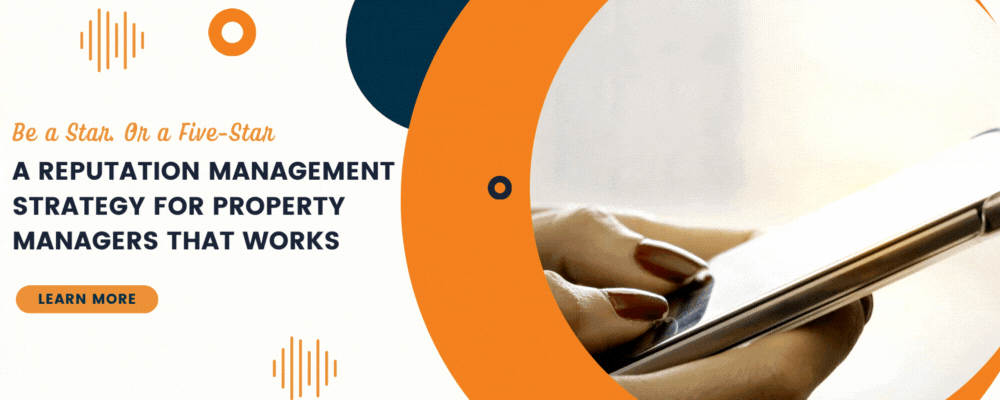Podcast: Play in new window | Download
On The Property Management Show today, we’re speaking with Andrew Smallwood, who is the Chief Customer Officer (CCO) at Second Nature and the host of the Triple Win podcast.
We’re diving into the difference between lifetime value and transactional value and how understanding that difference will help you have a successful property management business.
Building Customer Lifetime Value versus Transactional Value
The conventional thinking around winning is that you have to get the biggest part of the pie. You have to focus on maximizing profits. Andrew is asking us to think about winning in new ways.
Here’s the technical definition of customer lifetime value:
Customer lifetime value is how much revenue you get from a customer over the lifetime of that relationship.
From a revenue perspective, that’s an appropriate way to define lifetime value. It’s a fine metric.
What gets overlooked is that revenue cannot be the only way you look at things. When Andrew thinks about lifetime customer value, he’s not only thinking about how he’s monetizing the relationship. Here’s what he’s thinking about:
- What difference do we make for the customer?
- What value are we bringing the customer?
- How do we expand the difference we’re making and the value we’re delivering?
Increasing the value proposition and creating new value for customers will impact your lifetime customer value. If you make a bigger difference, you reap the rewards. If you start and end with how to monetize your relationship, this might lead to sub-optimal thinking and behavior; and, ultimately counterproductive results.
Lifetime Value: Keeping Customers and Residents and Talent
Property management thrives on recurring revenue. Churn is an acknowledged problem in our industry. We’re excited to see the new benchmark study but from the early results, we know it’s typical for a management company to lose 20 percent or 25 percent of its units. In the hot sales market we had through the pandemic, losing 30 percent or more would not be unheard of.
When customers are leaving at that rate, it becomes difficult to grow a business.
A lot of property managers experience getting stuck. Once you reach 150, 300, 500, or 700 doors, growth comes more slowly. Until you solve for the churn problem and you manage to be more effective with acquisitions, looking at lifetime value is your best way to sustainably grow a business.
Andrew says the question that needs to be asked is: How do we grow a relationship and bring so much value that people have such a great experience they would never leave?
At Second Nature, his team asks how to create a resident experience so good that residents don’t want to leave. They want to create an investor experience so good that investors don’t want to sell properties, they want to buy more. They want to create a team experience so good that the talent within the company wants to stay in the industry.
That drives the Triple Win philosophy.
Creating Retention Experiences While Making Money
 We want to create experiences so good that people don’t want to leave.
We want to create experiences so good that people don’t want to leave.
But, we’re all in the business of making money.
Andrew says this takes some nuance and thinking.
Who gets to define what a good experience is?
Ultimately, it’s the customer. Are these experiences that people pay for? Are they experiences that people stay for? Are they experiences they’ll want to tell their friends about?
If the experience isn’t doing one of those three things, is it really relevant?
How can you create a generous market value that grows the value of a customer? This is what you really need to be asking. Often, we think about the economic relationship and the pie. The longer the relationship goes on, the more you can expect the economic pie to grow, but it’s growing at the same scale.
When customers are looking for more value over time, they’ll need a bigger slice of that pie.
For property managers, this means more management for less money. You need to create new value and different values that are not necessarily commoditized. If we grow a bigger pie, everyone will get more from it.
It takes a willingness of the person creating the value to share the value.
This can be challenging for people.
You made something happen, so you should recoup all the spoils of those efforts, right? That’s fair-minded. But ultimately, if you’re trying to build relationships for the long term, you have to be willing to share value and be generous with others. This extends your relationship over time.
Sales and Customer Connections
Andrew has been in sales for a large part of his career.
He understands the hyper-focus on closing deals and increasing commission checks.
But, he does not think about sales in a conventional way. Second Nature attracts a different customer to the company because of that.
Here’s what he believes about sales.
Sales should be about how you help people make good decisions. What difference are you making as a salesperson?
It’s not about commission. Everyone has been on the opposite side of someone who works on commission.
What you need to think about, when you’re selling, is how to solve your customer’s problem and whether you can solve it at all. If something your potential customer needs isn’t a solution you have, make a connection and direct them to someone else who can help.
Be clear on your strengths and first make sure that the customer has a problem you can solve.
A lot of decisions lead to success. At Second Nature, Andrew shows potential customers how they can help people make better decisions. They have ridden the rollercoaster hundreds of times, and they have learned some important things.
This is an approach people appreciate more. You can hit your personal income goals, but what you really want to do is help other people reach their goals. As a salesperson, you need to identify the people to whom your skills and products can bring value. Identify them quickly and then support them.
It behooves you to only sell people what they need. But, the sales culture is strong. Think about all those LinkedIn messages you probably get. They’re total strangers sending impersonal messages inviting you to schedule a meeting to talk about lead generation.
That’s throwing a dart and hoping it lands.
This might work for some people. It has not worked for Andrew, and it’s not what he encourages others to do.
Nurture the Relationships You Already Have
 Think about getting the first date. Easy enough. But, moving into a long-term commitment takes effort. It’s the same with your customers. Closing the deal is a good first start, but then the relationship keeps changing. How do you determine what needs to be done with each customer?
Think about getting the first date. Easy enough. But, moving into a long-term commitment takes effort. It’s the same with your customers. Closing the deal is a good first start, but then the relationship keeps changing. How do you determine what needs to be done with each customer?
Andrew says there’s no one right answer, but he does have an answer that may help.
Do you do something small for all customers, or do you do something big for just a few customers? Or, is it a matter of prioritizing your customers? Where do you focus and invest?
This, too, has to be values-driven. And, your business model may inform your decisions.
Andrew wants a great relationship with everyone who wants a great relationship. Not everyone wants the same relationship, however. Many customers are happy to work with and talk to you, but they’re in the relationship to get a specific business outcome. Others will form a legitimate, deep friendship with you.
Practice radical generosity. That’s Andrew’s advice. Be willing to make the first move, and see who is responsive to that first move. Decide how to create more and more value in the relationship, and look for reciprocity.
You don’t want any of your customers to feel left out. But, if you can establish what kind of relationship your customers want to have with you, it’s easy to get a sense of how you’ll need to nurture that relationship and provide ongoing value.
There’s a risk to doing nothing for anyone because you don’t want to offend someone. In that scenario, everyone gets left out.
Creating Customer Relationships that Last
Andrew talks with thousands of property management company owners. We asked him what the secret seems to be…how do property management companies create good, lasting relationships with owners, investors, and residents?
Here are the insights Andrew shared:
- The more tightly you identify your ideal customer, the more success you’ll have with that customer relationship. It’s less about demographics and more about problems. What are the problems that your ideal customers need you to solve? And, how can you solve them passionately? Focus your relationship building there. Create value for specific customer profiles, and you’ll develop great relationships. You’ll add value to those relationships. Instead of casting a broad net to bring in any fish out there, be specific about the fish you want to catch.
- Focus on culture and hiring. Andrew loves asking, during employee interviews, for a story about when a potential hire made someone’s day. He’s heard incredible stories about what people have been willing to do, and when he hears about someone willing to invest in Moment Making, he knows it’s a good fit. Hire people who can build good relationships.
- Avoid competitive negotiation. Andrew learned this from FBI Negotiator Chris Voss. Negotiation must be about trust-based influence. It has to be collaborative and empathetic. Tech in the property management industry is exciting, but it doesn’t solve for empathy. Think about how you’re handling interpersonal interactions, especially with difficult people. The team environment matters. If someone is incentivized on how many customer tickets they’ve processed per day, they’ll be as short with a customer as possible. What you need instead is a team member who can create the right experience and produce a good feeling.
Are you thinking that this all makes sense for a large company with a lot of resources, but not for a smaller property management company who feels the need to cast a wide net and bring in as many fish as possible?
Andrew says this takes us back to where we started the podcast today.
It’s not a question of a company’s budget and revenue. For example, a handwritten note costs nothing. A recorded video costs nothing.
At Second Nature, the goal is to be Relentlessly Resourceful. The CEO and VPs share hotel rooms when they travel, for example. The money they save on extra rooms can be invested into their customers. This is a decision they’re willing to make because it matches their values.
 Radical generosity for customers is a value. They are not asking what’s the least they can do for their customer so they get the highest return. Instead, they’re asking what’s the most they can do for their customer to build this relationship.
Radical generosity for customers is a value. They are not asking what’s the least they can do for their customer so they get the highest return. Instead, they’re asking what’s the most they can do for their customer to build this relationship.
That’s a key thought that we started with. The least we can do versus the most we can do. Many of the best relationship-building things do not cost money, or they cost very little money.
How are you making people feel? What can you do to show your care, passion, interest, and curiosity?
Continue to make an impact and stay close to your customer. Think about how to align your resources so you can bring the most of that to your customers. Do the best work of your life and build the best relationships.
That’s what Andrew and the team want to accomplish at Second Nature, and you can do it too, with a small budget or a large budget.
There’s a lot of good information here. If you have any questions about this show, please contact us at Fourandhalf. And, if you haven’t checked out Andrew’s podcast yet, you should. Look for Triple Win on your podcast provider of choice.

